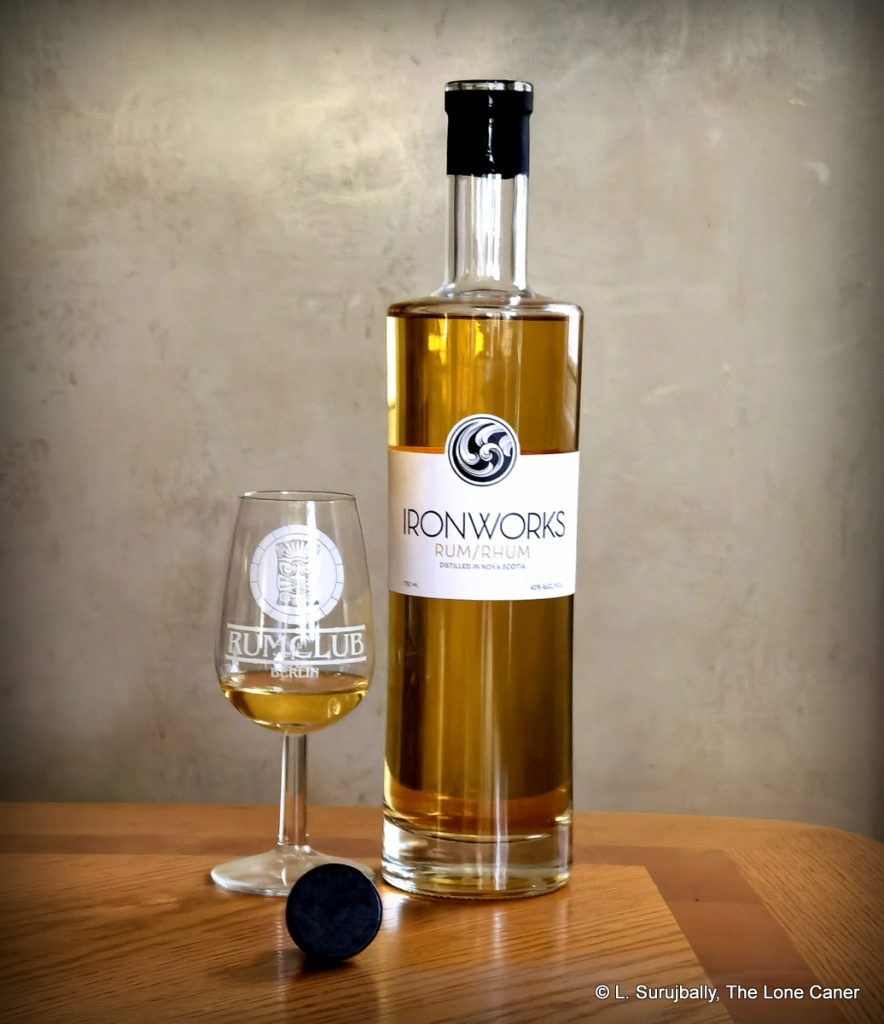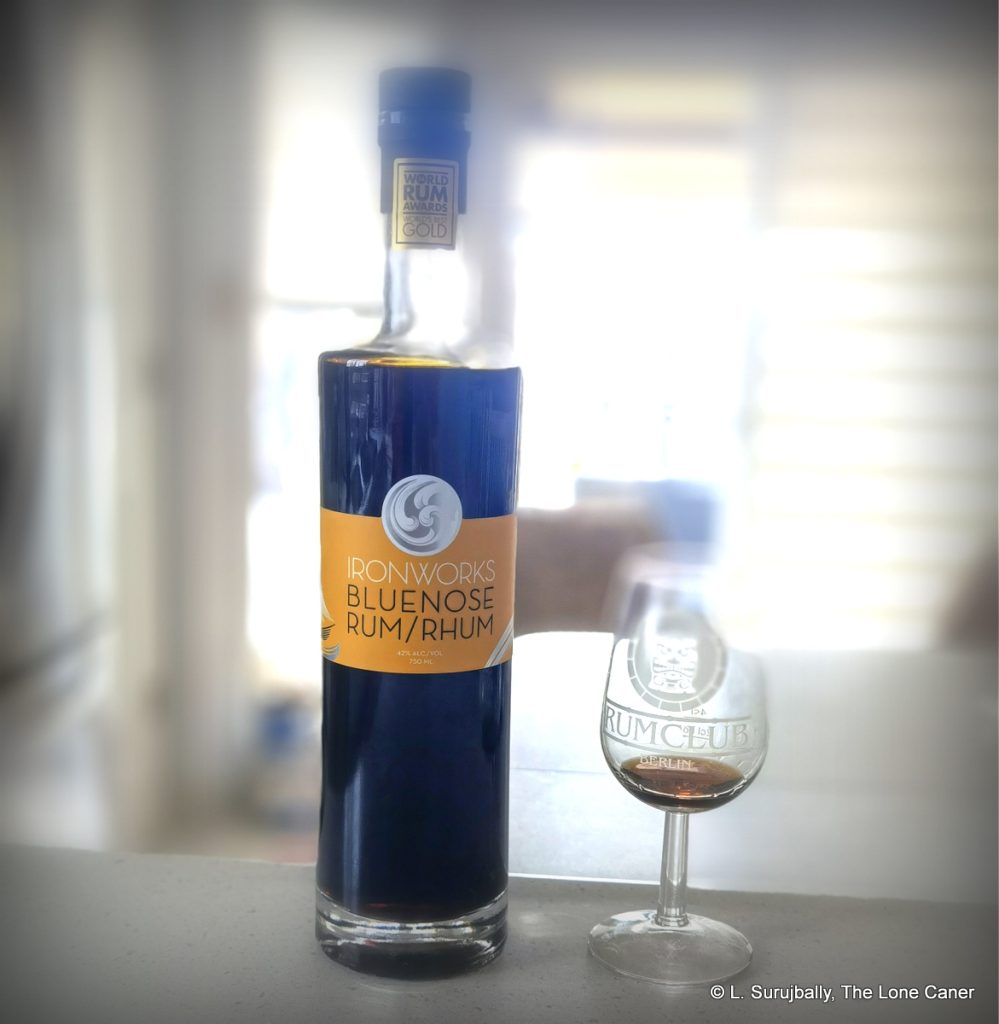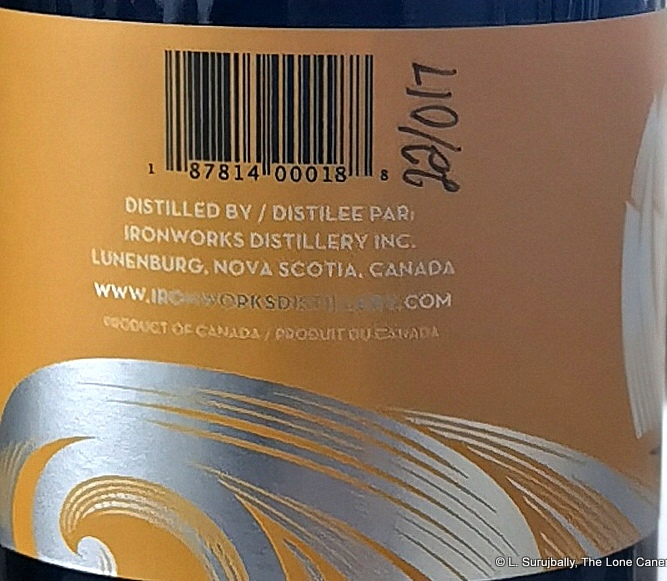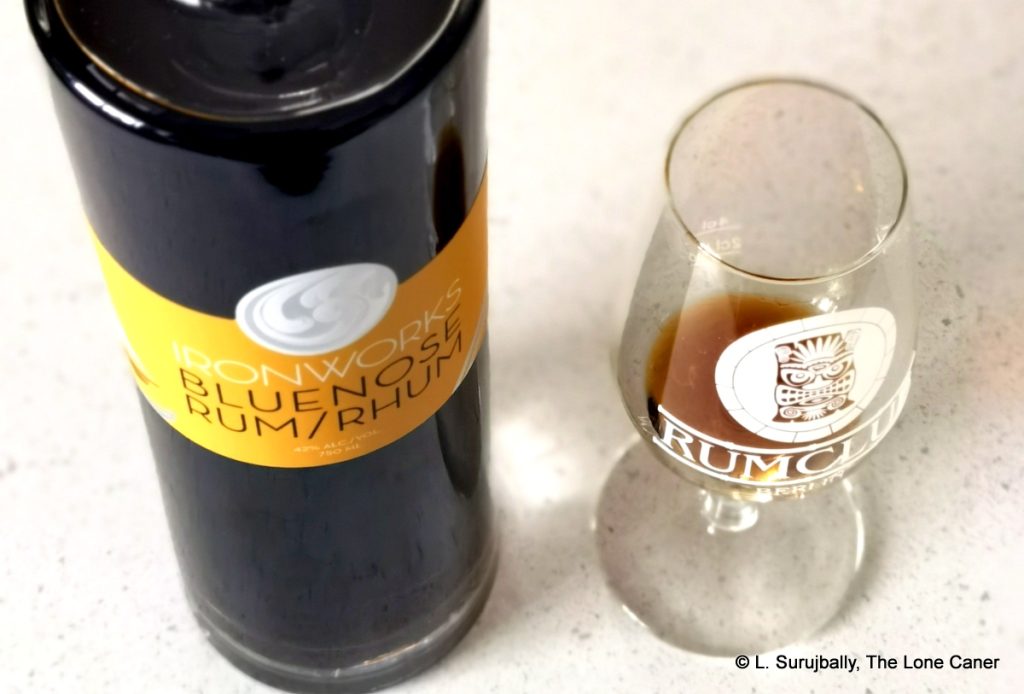Returning to Canada and observing the rumscape that has developed over the last decade has not filled me with elation and confidence. Most of what I’ve found and tasted thus far is low level mixing hooch – which wouldn’t be so bad if the majority wasn’t just the kind of barely-aged, insipid, uninspiring, boring blah that Merchant Shipping Co. white rum so splendidly exemplified. They didn’t have to be — after all, I’ve tasted unaged and lightly aged rums from all over the map which exceeded their humble origins and became unexpectedly and quietly impressive products. But up until last week, I was beginning to wonder whether there were any really good ones North of 49.
 With white rums of any stripe, the answer so far is a clear “no.” With aged rums, on the other hand, it would seem that there are glimmers of hope. Last weekend the Big (formerly the Little) Caner volunteered to help me run past a series of rums from around the world – I imagine that was a sort of amused curiosity at the doings of his geriatric sire involved – and since his nose is actually quite astute after years of following me around, I gladly accepted his assistance and perspective. We tried six rums blind together: 1 to my complete surprise, my top pick from the rather low-rent bunch (and his second choice) was the Ironworks Amber rum from Nova Scotia.
With white rums of any stripe, the answer so far is a clear “no.” With aged rums, on the other hand, it would seem that there are glimmers of hope. Last weekend the Big (formerly the Little) Caner volunteered to help me run past a series of rums from around the world – I imagine that was a sort of amused curiosity at the doings of his geriatric sire involved – and since his nose is actually quite astute after years of following me around, I gladly accepted his assistance and perspective. We tried six rums blind together: 1 to my complete surprise, my top pick from the rather low-rent bunch (and his second choice) was the Ironworks Amber rum from Nova Scotia.
This was the same rum-making outfit from Nova Scotia behind the “Bluenose” rum we looked at a couple of weeks ago. I thought that one was an interesting if ultimately not-quite-there foray into aged rums, with a more or less okay taste profile and too little disclosure (this has not changed), yet it wasn’t good enough to crack the eighty-point barrier, beyond which we should start paying a bit more attention. The Amber rum my boy and I tasted and which we’re reviewing today is still a rum in its developmental infancy – it has yet to find its sea legs if it wants to compare with any of the rums from the Big Houses’ stables – but by no means was it a slouch.
Quick stats: 42% ABV, molasses-based (Crosby’s Fancy Grade from Guatemala), with the wash passed twice through a hybrid Muller still and then aged; the ageing is tricky – the website says it is “a combination of a first fill bourbon barrel, and a re-charred Blomidon wine barrel” but whether that means the distillate was aged first in one then another, or two separately aged batches were blended, is not mentioned. Neither is the duration though I suspect it’s probably less than three years all told.
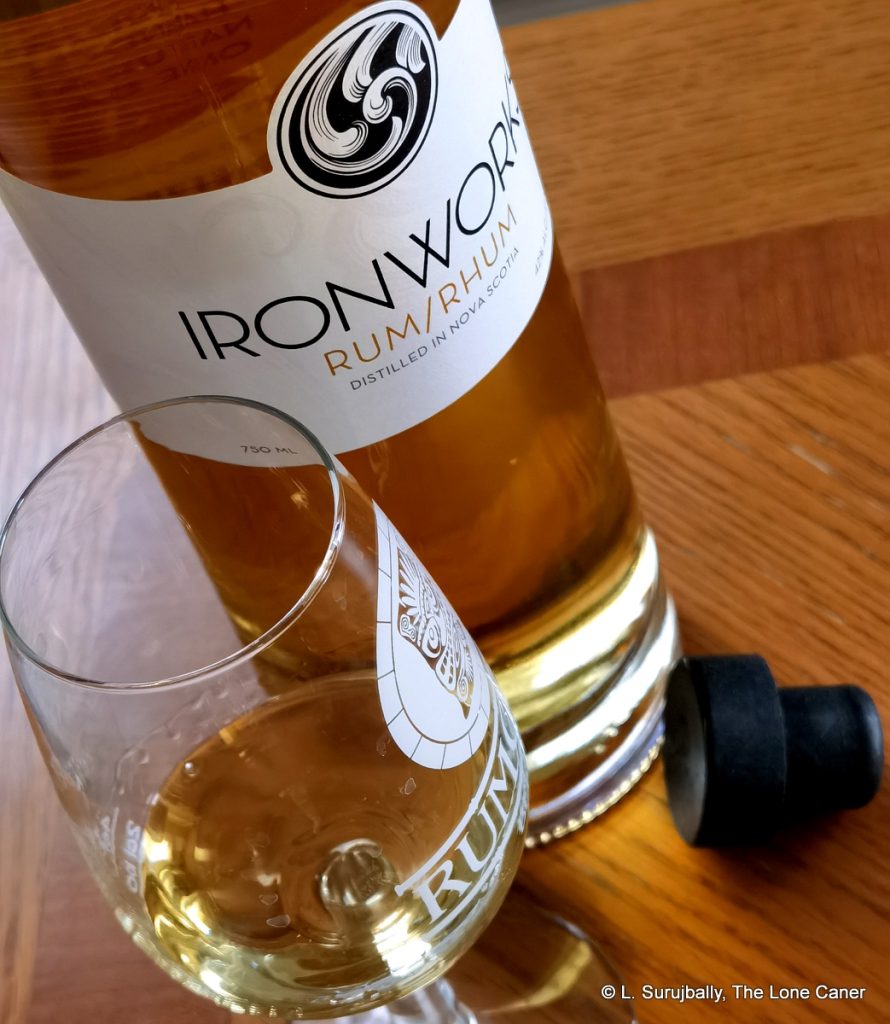 Yet from these unprepossessing beginnings the rum that comes out the other end is actually quite a nifty drink. “Sprightly!” I said to The Big Caner as we nosed it, and enjoyed the light effervescent quality is displayed when smelled. It evinced bright and lively fruits, young and crisp – green apples and grapes, offset by more sober ones like papaya and melons. Mixed in with the clear sweetness was a little smoke, a little rubber, not enough to take over…more like an accent. There were some hints of hand sanitizer, a medicinal or rubbing alcohol, and the whole thing eased up and settled down after a while, becoming almost creamy.
Yet from these unprepossessing beginnings the rum that comes out the other end is actually quite a nifty drink. “Sprightly!” I said to The Big Caner as we nosed it, and enjoyed the light effervescent quality is displayed when smelled. It evinced bright and lively fruits, young and crisp – green apples and grapes, offset by more sober ones like papaya and melons. Mixed in with the clear sweetness was a little smoke, a little rubber, not enough to take over…more like an accent. There were some hints of hand sanitizer, a medicinal or rubbing alcohol, and the whole thing eased up and settled down after a while, becoming almost creamy.
Tastewise the 42% also acquitted itself reasonably well. Here the subtle impression of a low rent agricole was hard to shake: fresh herbs, green grapes, unripe apples, and some citrus notes were the main players on the stage. A few riper fruits emerged from hiding, along with toffee and vanilla (thankfully not much of either), bright honey and sugar water. There was a nice background of brininess to it and it was subtly dry, leading to a short and easy finish of white chocolate, crushed almonds and some citrus, not much more. At 42% I was really surprised to get as much as all that, to be honest.
Overall then, the Ironworks Amber was light, easy drinking; reasonably well balanced, well assembled and not a disappointment. The sweetness was never allowed to dominate, though it could always be sensed lurking in the background; and if the smoky, feinty notes were not as well tamed as they might have been, well, some more ageing would probably have settled that and there are other rums in the company’s lineup which hopefully alleviate this. What’s impressive is that even in the company of the starter-kit rums in which the Amber found itself, it was able to stand out and make a statement for itself, and – to me at any rate – rise to the top of the heap of six. Granted the competition wasn’t world class, but it was from around the world. And that’s no mean feat, to be in that company, then equal and trump them all. It gives me hope for the Canadian rum distilling scene, though I hope it doesn’t take until the Big Caner reaches my age to get there.
(#992)(83/100) ⭐⭐⭐½
Other notes
- For some contrasting perspective, see Rum Revelations’ notes on Canadian rums from late 2022: he was rather indifferent to other Ironworks products generally (though they were not the ones I’ve tried, and not this one).
- The Bluenose rum review has a more detailed company background at the bottom.
